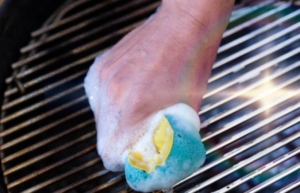Are There Some Stains Tooth Whitening Won’t Remove?

Everyone loves a bright smile, which, as we know, is enhanced by sparkling white teeth. If your teeth are discoloured, your level of self-esteem goes down. We understand how a great smile can raise your confidence around people. When living with the fear that smiling might expose your discoloured teeth, your confidence automatically subsides.
However, the advancement in teeth whitening has made it possible for people to improve their smile by using the readily available teeth whitening products. Even by merely using a whitening toothpaste, you can remove many of those tough stains. Some stains are, nevertheless, too strong for toothpaste. If the discolourisation is rooted, you may have to visit a dentist to have the stains removed.
Let’s look at some of the different types of teeth discolouration to distinguish between the ones that you can remove through teeth whitening and those that you can’t.
Extrinsic Stains
Anything that gets into your mouth, from the drinks you take to the food you chew, can stain your teeth, your enamel to be precise. Stains on the enamel are known as extrinsic stains as they’re only on the surface.
They’re acquired very quickly and are equally easy to remove. With a brush and a whitening toothpaste, you can get rid of the brownish or yellowish colour that has developed on your teeth as a result of the coffee, tea, or wine you drink.
Discolourisation from smoking is different, though. You can’t remove it by brushing your teeth using the standard whitening toothpaste. You’ll have to visit your dentist for ultra-dent tooth whitening treatment. Still, the dental procedure doesn’t guarantee 100% stain removal. It’ll, however, make your enamel brighter and whiter than before.
Intrinsic Stains
These are stains that originate from inside your teeth. Exposure to high levels of fluoride or tetracycline causes internal changes in the enamel, resulting in permanent stains. Neither tooth whitening nor brushing can remove such stains. To eliminate them, you’ll have to visit a dentist for deeper tooth cleaning.
On the other hand, some stains occur on the dentine. These stains are deep inside your teeth and are only visible when the enamel wears off. Nothing much can be done about them apart from using some artificial coating to cover up the stains.
Your dentist will do this in one of two ways. One approach involves placing a crown on your teeth, choosing the closest colour to your natural teeth. The other option is to apply a bonding material on the discoloured tooth. They then polish the bond until it takes the shape of your tooth.
It’s important to know that these two solutions aren’t permanent. Since the materials used are artificial, they quickly get discoloured, and you may have to visit your dentist for another crown or new bond filling sooner than you may think.
Teeth Whitening After-Care
You’ve got to do a lot to maintain that beautiful smile after whitening. It would help if you got down to the basics of oral hygiene. For the best results, after undergoing the stain removal, the following practices should be part of your daily routine.
Brush your teeth at least twice a day
Use a whitening toothpaste at least twice a week
Floss daily to prevent plaque build-up in between your teeth
Rinse your mouth with an antiseptic mouthwash at least once per day
In addition to these practices, make regular visits to your dentist to have your whitened teeth checked. You may also need touch-up treatments every six months for at least two years to prevent any discolouration resulting from the foods or drinks you take. Also, avoid sugary foods that encourage bacteria growth and plaque build-up.
In conclusion, teeth whitening remains one of the best ways to remove teeth stains. Everyone seeking teeth whitening should know, however, that the process doesn’t remove all types of stains. You’ll have to visit your dentist for the removal of the intrinsic stains mentioned above.
Whatever the case, let your dentist prescribe the best way forward.
Read Also:







